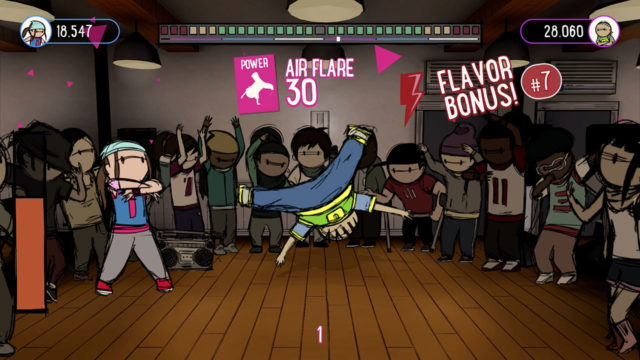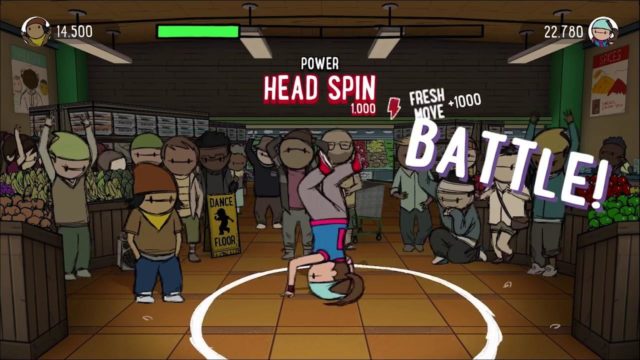
The rise of indie gaming has given players some truly unique titles to choose from. In the system’s first year, the Nintendo Switch is quickly accumulating an impressive number of quirky indie titles of its own, and Floor Kids is no exception. The rhythm-based breakdancing game made a big splash when it was announced during August’s Nindies Summer Showcase. The title is now available for download, and we were fortunate enough to talk to developer JonJon about the genesis of the stylish new title.
Nintendojo: First off, congrats on the new release! I’m surprised Floor Kids is the first real rhythm game we’ve seen based on breakdancing, but I have to say, I think seeing this type of game get an indie release is kind of fitting. Do you think that the sort of underground culture surrounding breakdancing lent itself well to the indie gaming scene?
JonJon: Thank you! We started out with an animated video clip that depicted our memories of bboy and DJ culture, which are rhythmic artforms. So, when we started exploring making a Floor Kids game, it made sense to design gameplay mechanics that make use of rhythm. We know that the rhythm game genre has a certain set of rules and conventions, which we took a look at, but one thing that is unique about dance and especially in breaking culture is the focus on expression, so that was really important to us.
ND: What was the genesis for Floor Kids?
JJ: Hand-drawn animation and breaking. Two things I’ve been super into for a long time. It was inevitable that they would collide at some point in my work. I was animating on a project at home one day, and I got bored and took a breather from it. Then I just started sketching these simple style characters doing moves that – either I knew how to do, or wanted to do. Six Step. Stab. Air Chair. Boom! I decided I wanted to see these moves in action, so I grabbed a stack of paper and I tested them out. It was kinda mesmerizing. Funny, cute, cool at the same time. I was pretty confused. Next stop, Kid Koala’s downtown apartment to show him what I had done. The rest is history!
ND: Did graffiti influence the game’s design and graphics?
JJ: Yeah. It was all around me growing up. Pieces, throw ups, tags. But there isn’t a whole lot of actual graffiti represented in the game. Graff has evolved so much now, that I didn’t know how to approach it, because I myself am not a graffiti artist. But I think being around graff guys and them showing me how to sketch letters, it’s more affected my process, in regards to the speed of my linework, I guess it’s sort of like a tag. A fast, energetic signature. Coloring the animation is kind of like the throw up. Bubbly round shapes, and you just color it in really quickly and move on. A piece is something you spend a lot of time on, something you’re proud of, you go big and everybody sees it, which is kind of our final game all put together – all of the animation, designs, tracks and super intricate details, and now it’s on Nintendo so everyone’s gonna see it.

ND: With other eShop rhythm games like Superbeat Xonic and Gal Metal out or coming to Switch, did you find it challenging to differentiate your game from the other options on the eShop?
JJ: I think it’s great that people love rhythm games so much that there’s plenty of titles out there to choose from and try out and have fun with. Recently, I won’t lie, I’ve been so deep into finishing my own game that I haven’t had time for anything else, but I’m looking forward to testing my rhythm skills out on Superbeat Xonic and Gal Metal. They sound pretty fresh.
Pages: 1 2




 ShareThis
ShareThis





